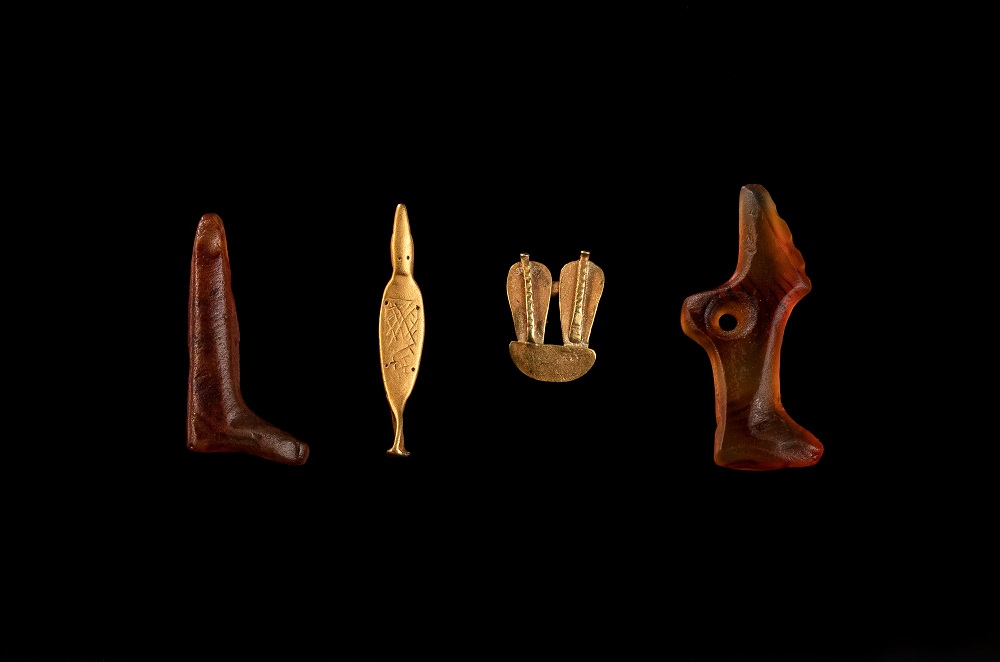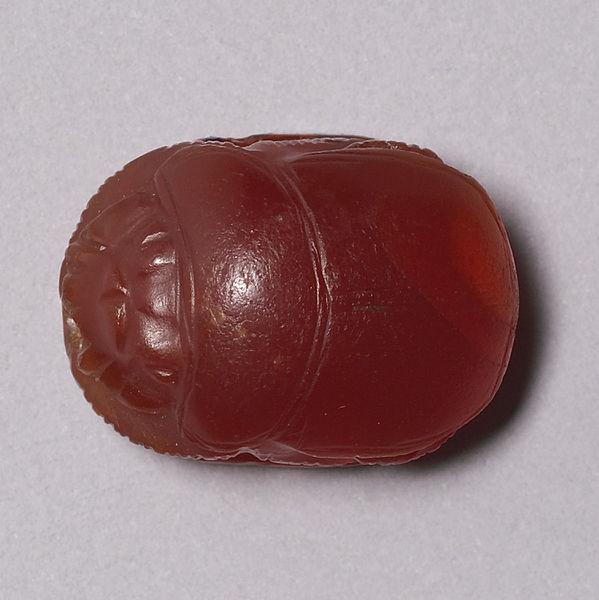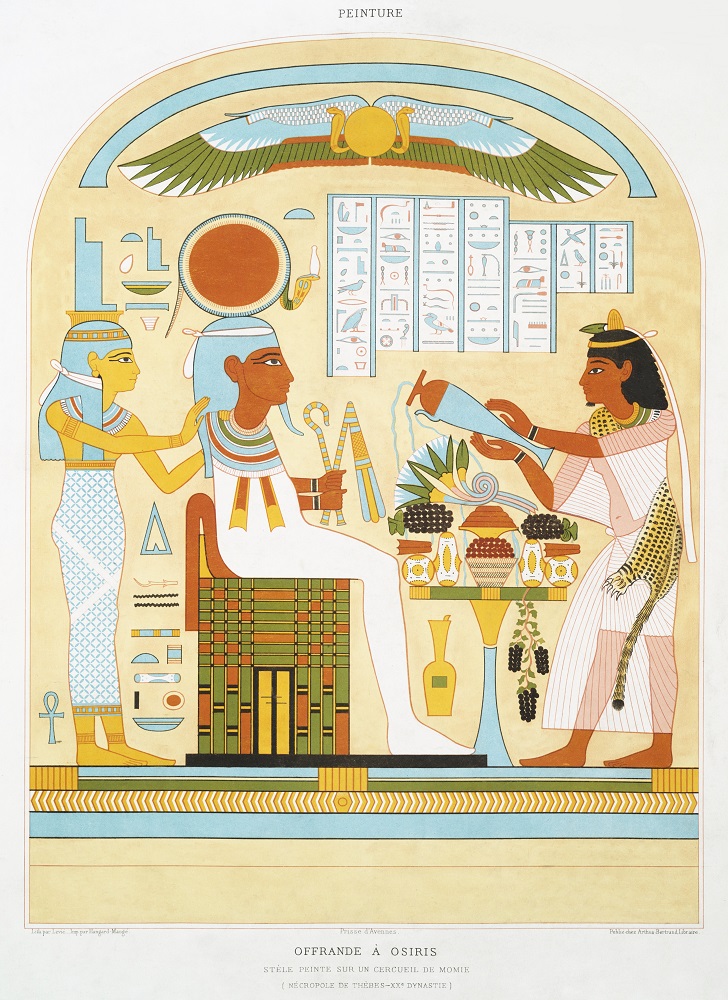While the Museum is closed I thought I’d share some photographs of objects in the Hall of Ancient Egypt that might not get as much attention as they deserve. These four little pieces, all under an inch tall, are today’s subjects for some time in the limelight.

Concern for one’s place in an uncertain and unfriendly world is a human constant, and amulets – objects worn or carried for protection and reassurance – remain part of Western culture just as they were for the Egyptians. If you have ever had a St Christopher, a Virgin of Guadalupe, or an energy-boosting crystal and a mascot on your desk, you are connected to an amuletic world.
The ancient Egyptians had an amulet for every eventuality. Different shapes and materials provided different sorts of protection, and were accompanied by different spells and chants, prescribed by magicians and doctors, to activate them. They were accessible to many people who would otherwise have left few traces in the archaeological record: many otherwise modest burials are equipped with an amulet or two to guide the dead person into the afterlife.

These amulets are made from gold and translucent red cornelian, both mined in Egypt’s eastern deserts. The left hand cornelian amulet is a leg, and would have been worn around its owner’s ankle to protect the limb. The taller gold amulet shows a striding figure with a wrapped body and a pointy crown, who can probably be identified as Osiris, god of death and the afterlife. Next to it are two rearing golden cobras emerging from a basket. Finally, on the right, comes a cornelian wrapped figure with a pointy crown – another image of Osiris. We can compare the gold and cornelian Osirises directly to see how the craftsmen used different techniques for different materials. The gold amulet was hammered out from a slug of metal, with details chiseled onto the surface and a suspension loop (not visible here) soldered onto the back. The cornelian one was shaped from a pebble with flint tools, and sanded smooth. Its suspension hole was ground out by a bow drill with a stone bit.
The amulets on display were not excavated together, but were all made around the same time, towards the end of the Egyptian Old Kingdom and during the First Intermediate Period – approximately 2300-2100 BC. This was a time when the centralized state that built the pyramids broke apart into smaller regional units.

Literary texts depicted the First Intermediate Period as a time of lawlessness, where the certainties of the Old Kingdom were cast aside and society was overturned. The Admonitions of Ipuwer describes robbery, rebellion, and the uprooting of the status quo. “Men are not what they used to be. Thieves plunder everywhere, and the servant pilfers whatever he finds”, reads one lament; in the same vein, Ipuwer continues “gold, lapis lazuli, silver, turquoise, carnelian … adorn the necks of maidservants,” while “those who owned robes are in rags.” Ipuwer’s complaint that now “magical spells are divulged” doesn’t sound so serious to us, though.
Ipuwer was written 200 years after the First Intermediate Period, from the distance and stability of the Middle Kingdom, and no one would now take it as a precise record of the time it describes. Excavation of First Intermediate Period cemeteries, however, has produced material like the museum’s amulets, and the study of who is buried with what tells a similar story. In essence, the richer burials get relatively poorer, while poorer burials get relatively richer. Increasing numbers of people have access to prestigious goods, like our amulets. As Ipuwer says, “he who could not make a coffin for himself is now the owner of a tomb.”
These amulets aren’t just the jewels that Ipuwer complains now “adorn the necks of maidservants”. They also had a protective job to do, and were made effective by magicians – showing that, as Ipuwer lamented, “magical spells are divulged.” Were people who had not previously been allowed to have magical protection in life and the afterlife taking the opportunity of a weak state to redress the balance? The long-cherished notion of a “democratization of the afterlife” in Egypt has been largely debunked by recent scholarship, but the material evidence speaks to a different sort of social leveling going on. Another new study of the formation of early states views them as coercive more than co-operative units, dependent on forced labour. Were everyday Egyptians of the First Intermediate Period happy no longer to be part of a giant, pyramid-building state? Whatever the answer, the amulets bear witness to a time when Egyptian culture was changing.
Though our physical doors are closed, our virtual doors remain open. Finding ways to creatively bring science to you is our highest priority. Your contributions matter today more than ever, as we strive to ensure that the museum is ready and able to welcome you back. Please GIVE TODAY to help support our mission of science education.

